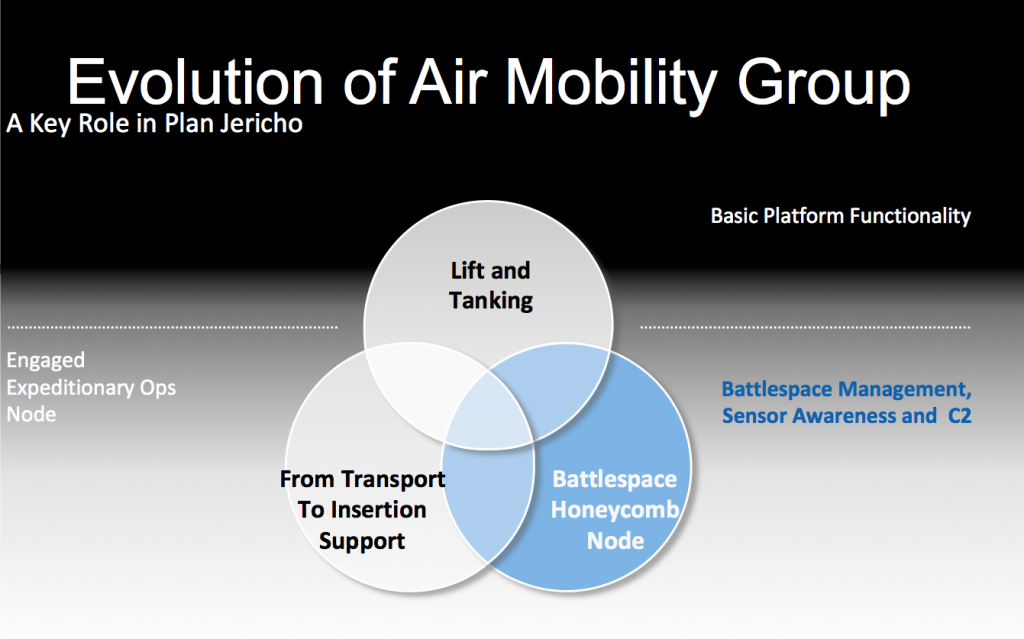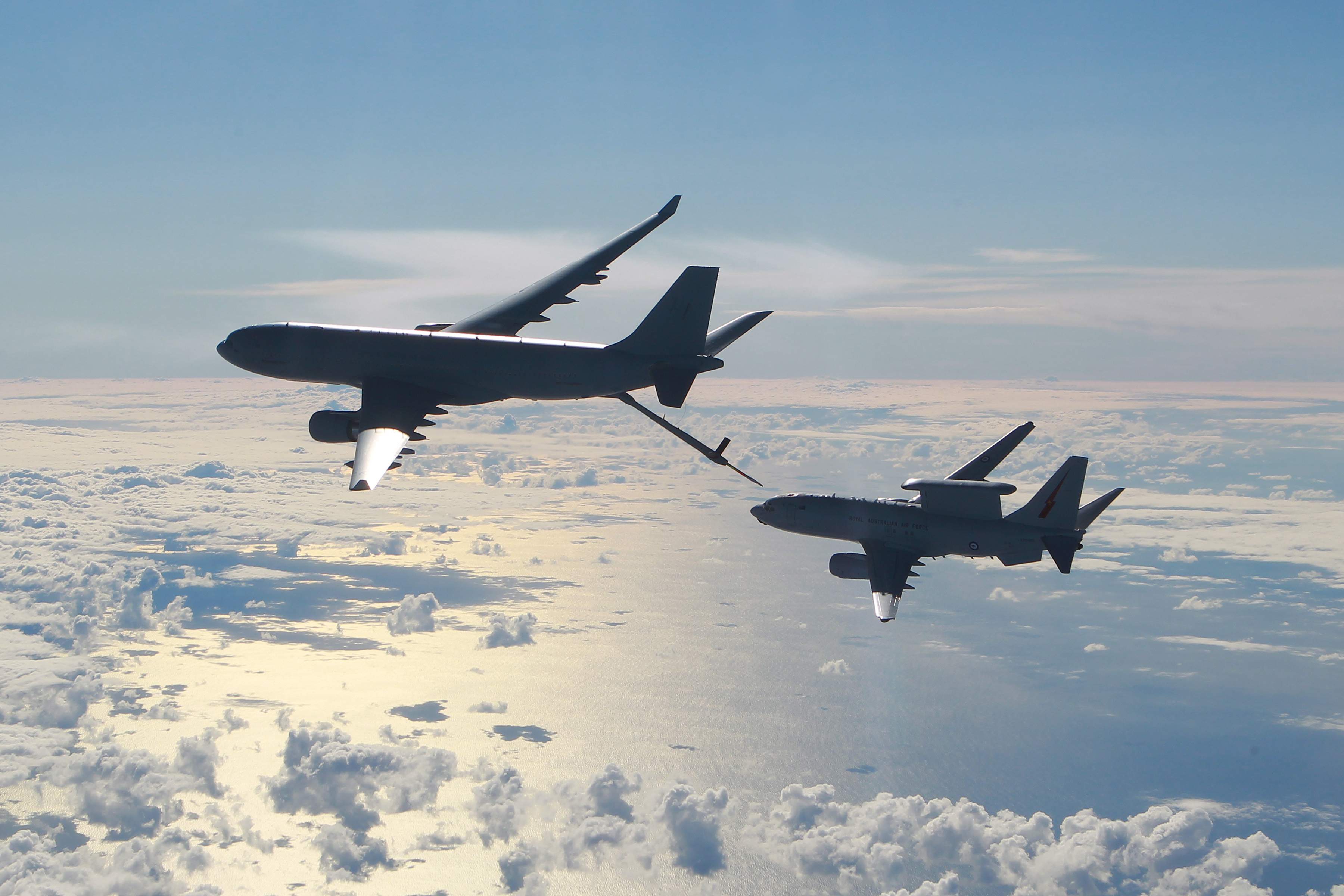The RAAF Air Mobility and Group and Plan Jericho: The Role of the A330MRTT
In this piece first published on August 31, 2015, I looked at the contribution of the Air Mobility Group to the RAAF’s transformation plan, dubbed Plan Jericho.
Their tanker is a key part of the transformation approach.
And more recently, Murielle Delaporte has visited the French Air Force base where the first French A330MRTT will operate and learned how central the A330MRTT is to French Air Force transformation plans.
And it is no surprise to learn that the Franco-Australian working relationship has been a two way street in this process.
During my visit to Australia in August 2015, I had a chance to talk with Air Commodore Lennon, the newly appointed AMG commander.
Lennon has an extensive background in lift and tanking, and has spent significant time working with the Australian Army as well.
As such, his appointment comes at a good time for the launch of Plan Jericho and the RAAF’s focus on the transformation of jointness.
As Air Commodore Lennon put it with regard to his background:
“I started out flying helicopters – Chinooks – before we gave them to the Army.
Then I had two tours on C-130s and then on the 707 tanker.
Having flown helicopters in support of the Army gives me an inside understanding of how the Army thinks about air support.
I have served also as an air liaison officer. I spent two and a half years trekking around the bush with the army.
I had the task of calling in fast jet support to the ground forces, so I have worked both the fast jet and helicopter sides of air support for the Army.”
A way to conceive of the shift underway can be seen in the graphic below.

Here the basic shift is one where Air Mobility Group functions largely as a garage storing tanking and lift assets which transport and fuel assets to its engagement in a much broader role in the battlespace and with it its ability to engage with and support ground, air and naval forces.
In particular, there is a concerted effort to augment the ability of the RAAF to go with ground forces to support operations, rather than just take them to operations.
In part this is about technology – adding comms and ISR links – but much more broadly a change in the concepts of operations and training, about which my meetings at Richmond with the C-130J squadron provided more details.
It is also about changing the role of the lifters and tankers in terms of how they will be equipped and operate in the battlespace.
They can function as nodes, IT transit elements, C2 enablers or repositories, but more generally, the question is how to use the real estate on the tanker – both outside and inside – to expand its role in the battlespace?
With regard to the shift from transport to force insertion support, this is a RAAF and Australian Army/Special Forces joint effort.
It is about adding SATCOM, ISR, and C2 assets to RAAF C-130Js, and C-17s.
As Air Commodore Lennon put it: “a key change going forward is the challenge of providing support to the ground forces in an amphibious assault operation.
And we are changing our concept of operations with the Special Forces so that we can provide situational awareness into the objective area and can stay behind to provide C2 and ISR assets for the expeditionary force as well, until it is determined whether, if and when such support should or could be offloaded to follow-on forces.
What support do the ground forces need in terms of support on the battlefield from airlift other than the direct kinetic effects?”
Clearly, this must be a two way street.
The RAAF can broaden its support to the Army, but the Army must work its digital interoperability with the RAAF.
For example, the Tiger assault helicopters need to connect to the AMG assets as well as the RAAF simply supporting ground forces which themselves are not being transformed.
https://sldinfo.com/aussie-tigers-fly-in-talisman-2015-exercise/
Transforming jointness is a cross cutting effort.
An example of the change has been modernizing the C-17.
One of the first Jericho Dawn efforts revolved around changing the communication system of the C-17.
A new advanced satellite communication and digital display system for crew and passengers has been installed on the Aussie C-17.
This is a tool which can allow for the kind of con-ops changes which Air Commodore Lennon described in the interview – the technology is a necessary but not sufficient condition for the kind of change envisaged in the Plan Jericho approach to the transformation of jointness.
As Air Commodore Lennon described the process:
This all came about when a commander got in the back of the C17 several years ago now, and noticed a satellite antenna patch panel on the side of the cargo compartment.
He asked, “I can plug my sat radio into this?”
I said, “Well, that’s the theory if you had the compatible equipment.”
And then the whole thinking process exploded in terms of, “Well, you could deploy us to somewhere, and then we could use the back of the aircraft as a command and control station instead of going out and putting a tent up on the side of the air field.”
“Yeah, we could do that.”
And then creative thought processes started.
If you have an IP-based communication system you can plug anything you like into it. If it’s wirelessly enabled you don’t even have to worry about a physical connection.
All you need is that communications pipeline.
And so there’s a lot of potential in the support we can provide in the communication space especially to both ground and air force elements.”
The second trajectory for change is evolving the role of AMG assets in transforming the battlespace.
Here the concept is that lifters and tankers are not simply transportation and fuel off loaders, but are operating in the battlespace and their role can expand as the concept of operations is shifted via additions of appropriate technology to allow them to shape greater capability within the integrated battlespace.
As Air Commodore Lennon put it:
There is a lot of real estate inside and outside of the KC-30A.
How we use that real estate needs to be determined by evolving concept of operations, not simply applying a technology solution set offered by a prime contractor.
From a support perspective, software-enabled systems of the sort prevalent in today’s C2 and ISR systems, are almost throw away systems within five years.
We need to build in cost effective systems which do not go on forever and are not expected to be repaired beyond a certain period but simply replaced by new, better and cost effective technologies.

